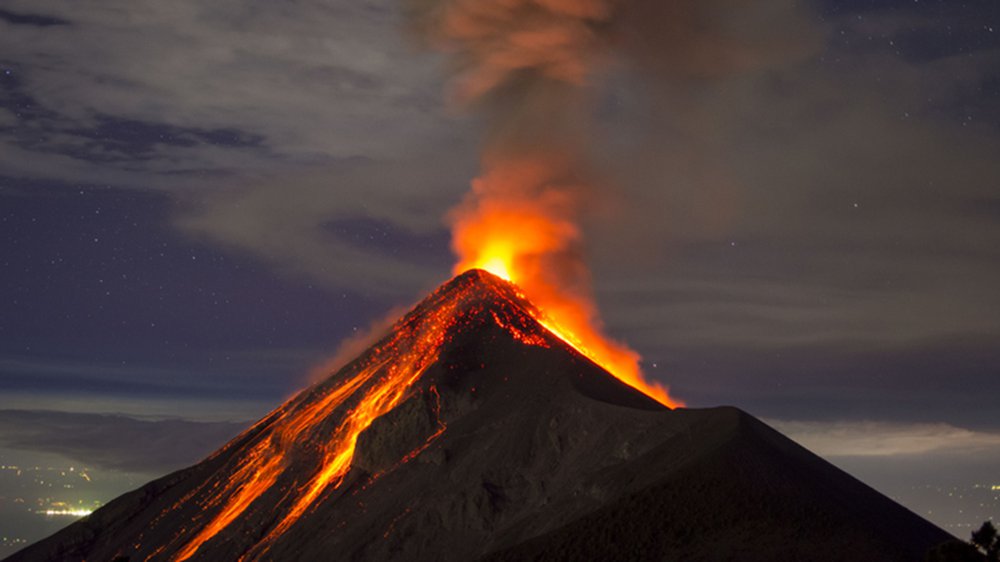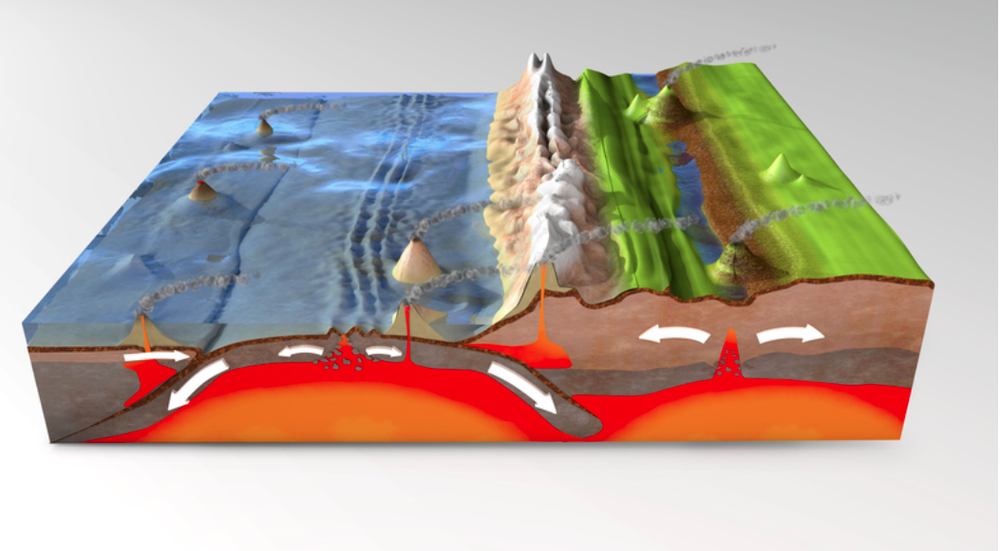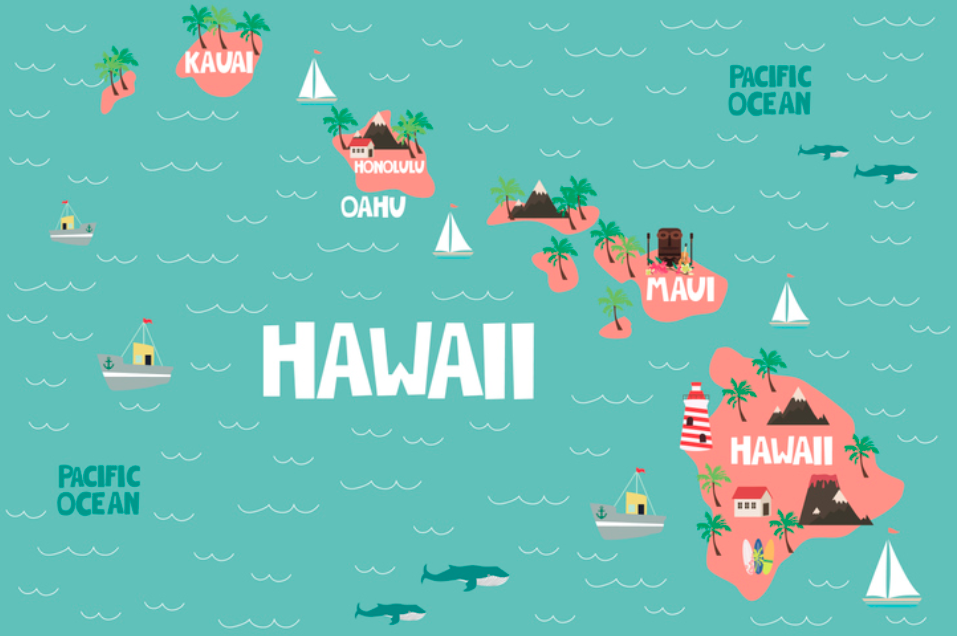Volcanoes 101
Imagine the Earth as a hardboiled egg with a cracked shell. Liquid material inside the egg might escape through the cracks, just as can happen along cracks in the Earth’s crust.
The Earth’s crust consists of large masses of rocks called tectonic plates that “float” on a thick layer of very hot rock called the mantle. The rocky materials in the mantle flow somewhat like hot asphalt due to intense heat and pressure deep in the Earth. The flow of the mantle is what causes the tectonic plates to move.

So what does this have to do with volcanoes?
A volcano can form when hot, molten material from the Earth’s interior erupts through a crack in the crust and onto the Earth’s surface. This hot material or molten rock is called magma when it’s underground and lava once it’s on the surface.
So how does a volcano form? There are three primary reasons that magma might erupt onto the surface as a volcano.

- When tectonic plates pull apart, the resulting cracks in the crust allow magma to rise to the surface as lava, forming volcanoes. This process is happening in the middle of the Atlantic Ocean, resulting in an underwater mountain range called the Mid-Atlantic Ridge. You can see this process with your own eyes by visiting the country of Iceland.
- When tectonic plates of different materials collide, one plate is sometimes pushed under the other, grinding the plates violently together. The intense heat and pressure from the collision melts the rocks, and magma rises upwards along the place where they meet, known as the subduction zone. This process is responsible for the Cascades mountain range in the Pacific Northwest. Mount St. Helens, which violently erupted in 1980, is a subduction zone volcano.
- The third reason for magma to rise through the crust is a volcanic hotspot. A volcanic hotspot is exactly what it sounds like – a place where the Earth’s mantle is unusually hot causing magma to rise, kind of like what is happening in a lava lamp. This super-hot magma sometimes pierces the Earth’s crust forming a volcano. Hotspot volcanoes are unique in that they are not at the boundary of a tectonic plate. This process is what caused the formation of the Hawaiian Islands.
Hotspots are thought to be stationary under the crust, but as the tectonic plate moves over the stationary hot spot, a chain of volcanoes can grow and decay over geologic time. As the volcano moves further from the source of the magma (the hotspot), volcanic activity wanes and eventually ceases altogether, and another, new volcano begins to appear
The Hawaiian Islands were all formed over the Hawaiian Hotspot. Their tectonic plate is moving northwestward, so the southernmost islands are younger, geologically speaking, than the northern ones. Currently, the big island of Hawaii sits over the hotspot, hence the recent volcanic activity at Kilauea. However, the Loihi Seamount off its southeast coast is showing signs of possibly becoming the next member of the Hawaiian island chain in the near geologic future.

Volcanic eruptions can be destructive. For example, the eruption of Vesuvius in 79 AD buried the cities of Pompeii and Herculaneum. Fortunately, scientists have developed efficient and accurate equipment to monitor volcanoes for unusual activity, such as earthquakes, ground movement, gas emissions and other factors. Knowing what is happening in real-time allows them to communicate accurate warnings to the public to prevent potential loss of life and property.
Love volcanoes? Learn more about volcanoes' awesome power of creation in Volcanoes: The Fires of Creation now showing in the Dome.
Credit: all images via Getty Images